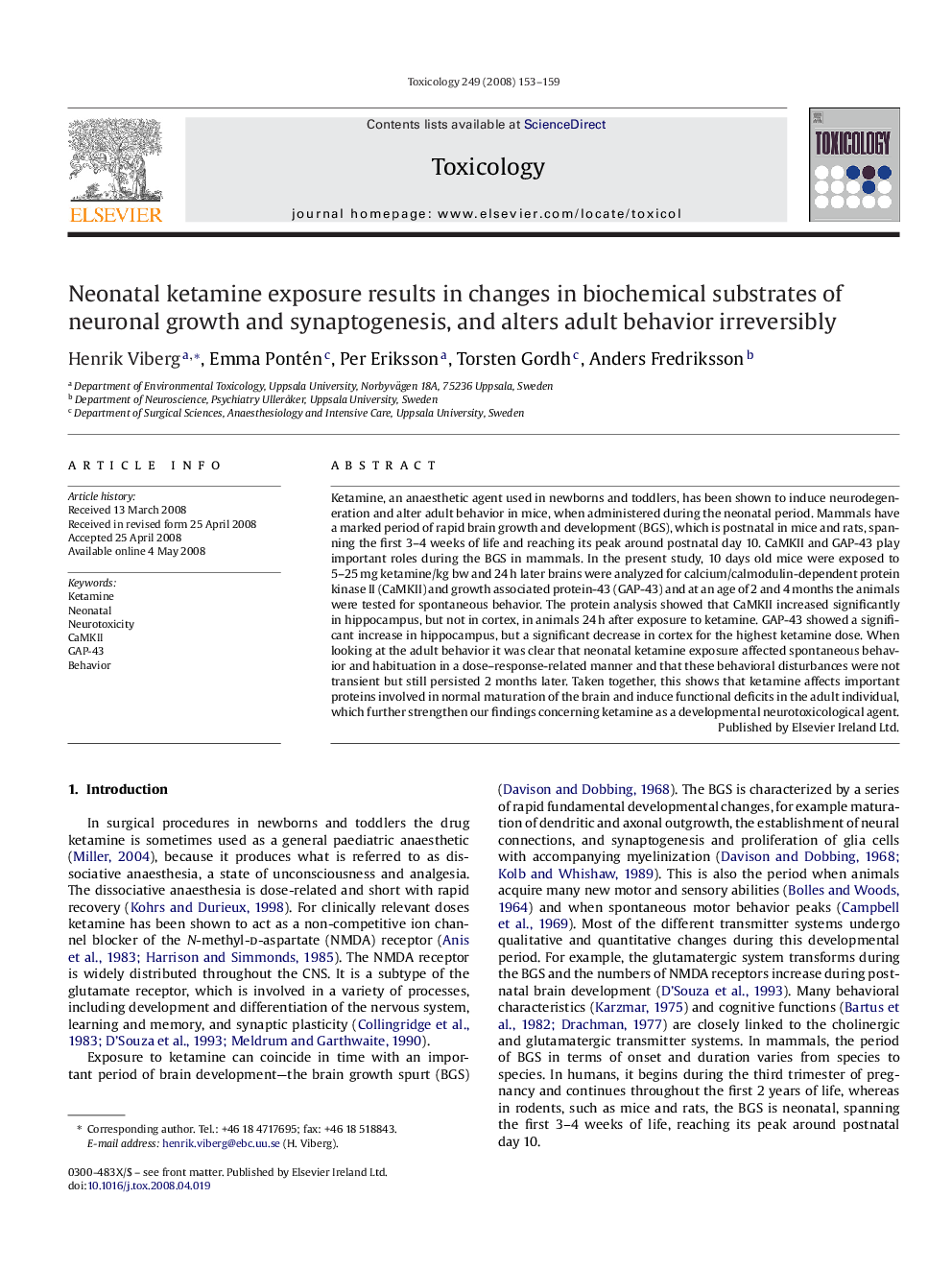| Article ID | Journal | Published Year | Pages | File Type |
|---|---|---|---|---|
| 2596967 | Toxicology | 2008 | 7 Pages |
Ketamine, an anaesthetic agent used in newborns and toddlers, has been shown to induce neurodegeneration and alter adult behavior in mice, when administered during the neonatal period. Mammals have a marked period of rapid brain growth and development (BGS), which is postnatal in mice and rats, spanning the first 3–4 weeks of life and reaching its peak around postnatal day 10. CaMKII and GAP-43 play important roles during the BGS in mammals. In the present study, 10 days old mice were exposed to 5–25 mg ketamine/kg bw and 24 h later brains were analyzed for calcium/calmodulin-dependent protein kinase II (CaMKII) and growth associated protein-43 (GAP-43) and at an age of 2 and 4 months the animals were tested for spontaneous behavior. The protein analysis showed that CaMKII increased significantly in hippocampus, but not in cortex, in animals 24 h after exposure to ketamine. GAP-43 showed a significant increase in hippocampus, but a significant decrease in cortex for the highest ketamine dose. When looking at the adult behavior it was clear that neonatal ketamine exposure affected spontaneous behavior and habituation in a dose–response-related manner and that these behavioral disturbances were not transient but still persisted 2 months later. Taken together, this shows that ketamine affects important proteins involved in normal maturation of the brain and induce functional deficits in the adult individual, which further strengthen our findings concerning ketamine as a developmental neurotoxicological agent.
